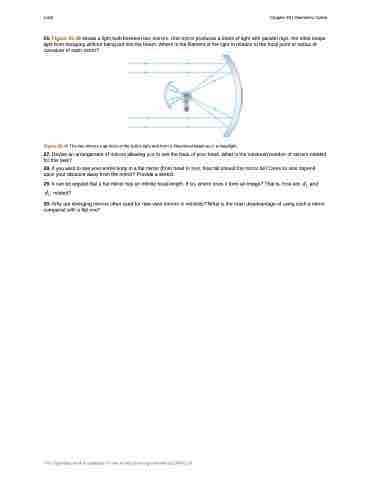Page 1172 - College Physics For AP Courses
P. 1172
1160 Chapter 25 | Geometric Optics
26. Figure 25.48 shows a light bulb between two mirrors. One mirror produces a beam of light with parallel rays; the other keeps light from escaping without being put into the beam. Where is the filament of the light in relation to the focal point or radius of curvature of each mirror?
Figure 25.48 The two mirrors trap most of the bulb’s light and form a directional beam as in a headlight.
27. Devise an arrangement of mirrors allowing you to see the back of your head. What is the minimum number of mirrors needed
for this task?
28. If you wish to see your entire body in a flat mirror (from head to toe), how tall should the mirror be? Does its size depend upon your distance away from the mirror? Provide a sketch.
29. It can be argued that a flat mirror has an infinite focal length. If so, where does it form an image? That is, how are �� and �� related?
30. Why are diverging mirrors often used for rear-view mirrors in vehicles? What is the main disadvantage of using such a mirror compared with a flat one?
This OpenStax book is available for free at http://cnx.org/content/col11844/1.14


